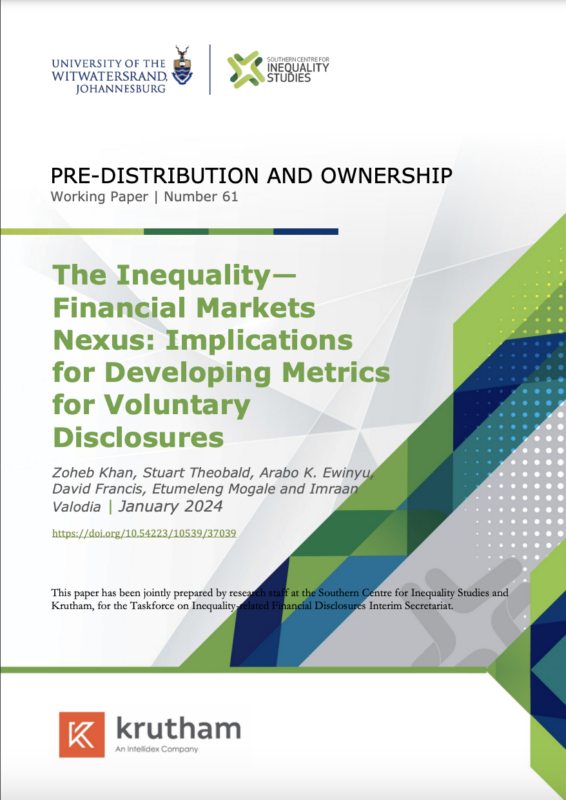How can a disclosure framework reduce overall socio-economic inequality? What are the potential blindspots that could result in shifting inequality somewhere else – for example, to other firms, other regions, or out of the firm and the private sector and into households? Are there regional variations in the causes and effects of socio-economic inequality that need to be borne in mind by the design of such a framework?
According to a newly released research paper – “The Inequality—Financial Markets Nexus: Implications for Developing Metrics for Voluntary Disclosures” – produced in its role as a member of the Interim Secretariat of the Taskforce on Inequality-related Financial Disclosures (TIFD)*, the Southern Centre for Inequality Studies (SCIS) at University of Witwatersrand together with Krutham (formerly Intellidex) asserts that the answers to these questions are critical to the success of a disclosure framework for inequality.
The authors of this paper argue that due to profound regional variations, a one-size-fits-all disclosure framework is unlikely to succeed. While disclosure frameworks matter for formal companies, often overlooked in the design of disclosure frameworks are the implications for the large number of people, particularly in the global South, who are informally employed or who work in informal enterprises. Similarly, the framework will need to take into consideration not only vast income inequality, but also high unemployment globally and relatedly the growth of precarious and non-standard employment.
The SCIS-Krutham paper is set to be a critical input into the Taskforce on Inequality and Social-related Financial Disclosures as it commences its work in late 2024.
*During the course of this research, TIFD converged with a similar initiative to form TISFD.
